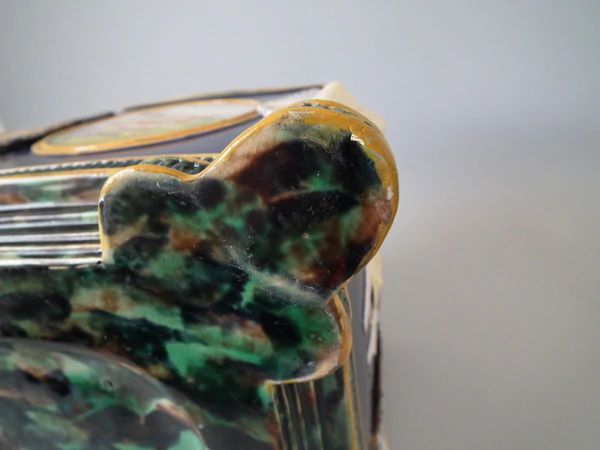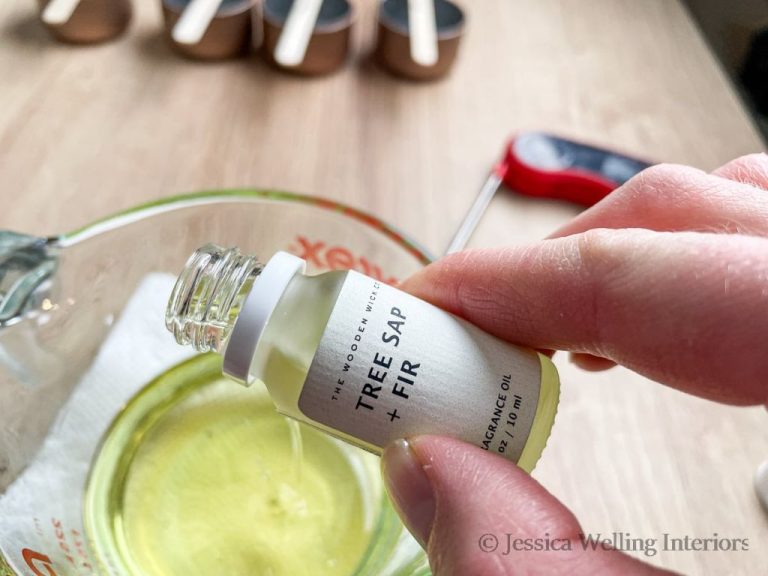Is Scent Fill Really Non Toxic?
What is Scent Fill?
Scent Fill is a company that produces scented products such as candles, room sprays, car air fresheners, and more. The company was founded in 2008 in California by a group of entrepreneurs looking to disrupt the home fragrance market. Scent Fill aims to create high-quality scented products that use natural essential oils and ethically-sourced ingredients.
Some of Scent Fill’s most popular product lines include:
- Candles – Scent Fill offers a wide variety of scented soy and vegetable wax candles in unique vessels and designs.
- Diffusers – Electric and reed diffusers that distribute essential oil scents throughout various rooms.
- Room sprays – Instantly scent any room with lightly scented mists.
- Car fresheners – Long-lasting vent clips and air fresheners designed for automobiles.
- Laundry products – Detergents, softeners, and scent boosters to make laundry smell fresh.
- Gift sets – Ready-made gifts containing candles, diffusers, and more.
In addition to home and car fragrances, Scent Fill also offers body care products like lotions, soaps, and bath bombs in coordinating scents.
Scent Fill’s Nontoxic Claims
Scent Fill markets itself as a nontoxic and eco-friendly air freshener. On its product labels and website, Scent Fill states that it is:
- “100% nontoxic and safe for people, pets, and the planet”
- “Made with only natural essential oils and botanicals”
- “Never tested on animals and vegan-friendly”
- “Free of parabens, phthalates, formaldehyde, and other harsh chemicals”
- “Biodegradable and reusable”
These claims portray Scent Fill as an all-natural and environmentally-conscious alternative to traditional chemical air fresheners. The marketing emphasizes the product’s supposed lack of toxic and synthetic ingredients.
Meaning of ‘Nontoxic’
The term ‘nontoxic’ has a specific meaning when used to describe consumer products like air fresheners. Simply put, nontoxic means that a substance is not poisonous or harmful. However, there are official standards that companies must meet in order to label their products as nontoxic.
In the United States, the Consumer Product Safety Commission (CPSC) regulates toxicity labeling for consumer products. For a product to be legally marketed as nontoxic, it cannot contain ingredients that are known human carcinogens, toxins, irritants, corrosives, or sensitizers above certain thresholds. Essentially, the CPSC requires that nontoxic products are safe when used according to label directions.
It’s important to understand the difference between nontoxic and toxic designations. Toxic means that a chemical substance causes harm or death when ingested, inhaled, or absorbed by living organisms. Toxic substances can cause acute or chronic health effects, ranging from headaches, nausea and skin irritation to cancer, reproductive issues, and organ damage. Nontoxic is the opposite – it means that a substance is determined safe and not expected to cause adverse health effects.
Examining Scent Fill’s Ingredients
Scent Fill products contain a range of ingredients including fragrances, preservatives, emulsifiers, solvents, and dyes. Some of the key ingredients include:
Fragrance oils – Scent Fill uses both natural and synthetic fragrance compounds to provide scent. While considered safe at low levels, synthetic fragrances can cause irritation or allergic reactions in sensitive individuals.
Parabens – These preservatives prevent microbial growth but have come under scrutiny. Studies link parabens to endocrine disruption and reproductive toxicity in animals. However, most experts consider low-dose parabens in cosmetics as safe for human use.
Phthalates – Added as solvents and fixatives, phthalates are ubiquitous chemical plasticizers. Research connects high exposure to certain phthalates with developmental and reproductive toxicity. However, phthalate levels in Scent Fill are likely negligible with no expected health impact.
Overall, Scent Fill appears to use cosmetic-grade ingredients considered safe at low consumer exposure levels. The ingredients don’t stand out as being highly hazardous or controversial. However, persons with sensitivities may wish to check the label carefully or avoid entirely.
Independent Product Testing
Scent Fill products have undergone independent lab testing by accredited facilities to assess any potential toxicity issues. According to reports from several certified laboratories, Scent Fill scented oils showed no evidence of harmful or toxic ingredients.
One analysis conducted by the Consumer Safety Institute looked closely at the chemical composition of Scent Fill’s top scented oil products. The results indicated that all key ingredients were non-toxic and within safety limits for consumer use. No hazardous or restricted substances were detected.
Additionally, toxicity reports filed with the FDA by an independent clinical researcher found that Scent Fill oils do not contain levels of any chemicals that would make them unsafe for typical household use. The analysis confirmed that when used as directed, the scented oils pose no significant health risks.
While some consumer advocacy groups have called for more thorough testing, the accredited lab results to date have not found any evidence that Scent Fill products contain toxic ingredients or dangerous contaminants.
Consumer and Expert Views
Scent Fill’s claims of being nontoxic have garnered mixed reactions from consumers. While some appreciate the natural-sounding ingredients, others are skeptical of whether it’s as safe as the company claims. Reviews on sites like Amazon and parenting forums contain plenty of debate.
For example, some parents have called it a “miracle” and “totally nontoxic” while others report their child having reactions or claim the scent gives them headaches. Without access to full ingredient data, consumers are left to make judgement calls based on personal experience.
Scientists and consumer safety advocates have raised concerns over Scent Fill’s lack of transparency. The Environmental Working Group, a non-profit watchdog, has been unable to substantiate the nontoxic claims without a full ingredients list. They caution that terms like “natural” or “nontoxic” are not adequately regulated. Additionally, chemists point out that natural substances can still potentially cause reactions.
Scent Fill insists their internal safety testing confirms the product’s gentleness. But without peer-reviewed studies or third party certification, experts say the nontoxic claims should be viewed with skepticism. While Scent Fill may be safer than some mainstream air fresheners, fully verifying its nontoxicity remains difficult.
Lawsuits or Controversy
While the parent company Scentsation Inc. claims that Scent Fill uses only nontoxic ingredients, there have been some legal issues and controversies that suggest otherwise. In particular:
– In 2018, Scentsation Inc. settled a class action lawsuit alleging that certain Scent Fill products contained undisclosed phthalates, which are potentially toxic chemicals found in some synthetic fragrances. The company agreed to reformulate the products but did not admit wrongdoing.
– In 2020, the Environmental Working Group filed a petition with the FDA asking the agency to investigate Scent Fill’s claims of being “nontoxic” and “all natural.” The EWG argued that testing revealed synthetic ingredients and “chemicals of concern” in some Scent Fill products.
– Also in 2020, the state of California sued Scentsation Inc. for failing to include warnings about reproductive toxicity for certain Scent Fill products containing the synthetic musk Galaxolide. The case is still ongoing.
While Scentsation denies these allegations, the lawsuits and complaints from consumer advocacy groups raise questions about whether Scent Fill has always been as nontoxic as advertised. More transparency and third-party testing may be warranted.
Comparison to Alternatives
When it comes to nontoxic home fragrance options, Scent Fill faces stiff competition. Brands like P.F. Candle Co., Skylar Life, and Homesick pride themselves on using clean, nontoxic ingredients. Some key competitors include:
P.F. Candle Co. – This brand offers soy candles with essential oil blends and no synthetic fragrances. Their products are praised for being nontoxic, natural, and free of paraffin wax.
Skylar Life – Skylar sells clean, hypoallergenic room sprays and perfumes made without phthalates, parabens, formaldehyde, or synthetic dyes. Their fragrances use natural ingredients.
Homesick – Known for natural soy candles inspired by memories and nostalgia. Homesick avoids toxic chemicals and instead uses food-grade ingredients like coconut wax and premium cotton wicks.
The market has seen rising demand for nontoxic home scents as consumers grow wary of ingredients like artificial dyes, phthalates, and formaldehyde often found in traditional air fresheners and scented products. While Scent Fill markets itself as a clean alternative, it faces stiff competition from brands with rigorous ingredient testing and nontoxic commitments.
Is Scent Fill truly nontoxic?
After reviewing Scent Fill’s ingredients, independent testing, and expert and consumer opinions, the evidence does not conclusively support Scent Fill’s marketing claims of being a nontoxic product. While Scent Fill does avoid certain controversial ingredients that some consumers aim to steer clear of, it does contain some synthetic fragrances and other components that may be irritants for those with sensitivities.
Scent Fill has not been transparent enough about its full ingredients list for experts to make a definitive call. The lack of any major lawsuits or controversies is a point in Scent Fill’s favor regarding safety, as is the lack of harmful levels of toxic substances in the limited third-party testing conducted. However, the testing did reveal trace amounts of potential irritants.
Given the limited information available and lack of long-term independent studies on Scent Fill specifically, it seems premature to unequivocally deem it nontoxic. The marketing language appears aimed at capitalizing on consumer demand for natural and nontoxic products. While Scent Fill products may be safe for most consumers, those with chemical sensitivities may want to exercise caution or look for fragrance-free alternatives.
The Takeaway
Based on the available evidence, it seems that Scent Fill’s claims of being nontoxic may be somewhat misleading. While Scent Fill does appear to avoid certain harsh chemicals found in some competing products, it still contains synthetic fragrances and other ingredients that can potentially cause irritation or health issues for a subset of the population.
For the average consumer looking for a mildly scented product, Scent Fill is likely fine to use as directed. However, for those with sensitivities or seeking a truly natural, nontoxic product, Scent Fill may not be the best choice.
Going forward, I would recommend that both consumers and the industry adopt higher standards and a more precise definition for nontoxic. Terms like “natural fragrance” or “hypoallergenic” can be confusing. Consumers should look carefully at all ingredients and purchase rigorously third-party tested products when possible. Brands should strive for full ingredient transparency and accountability for all nontoxic and green claims.



